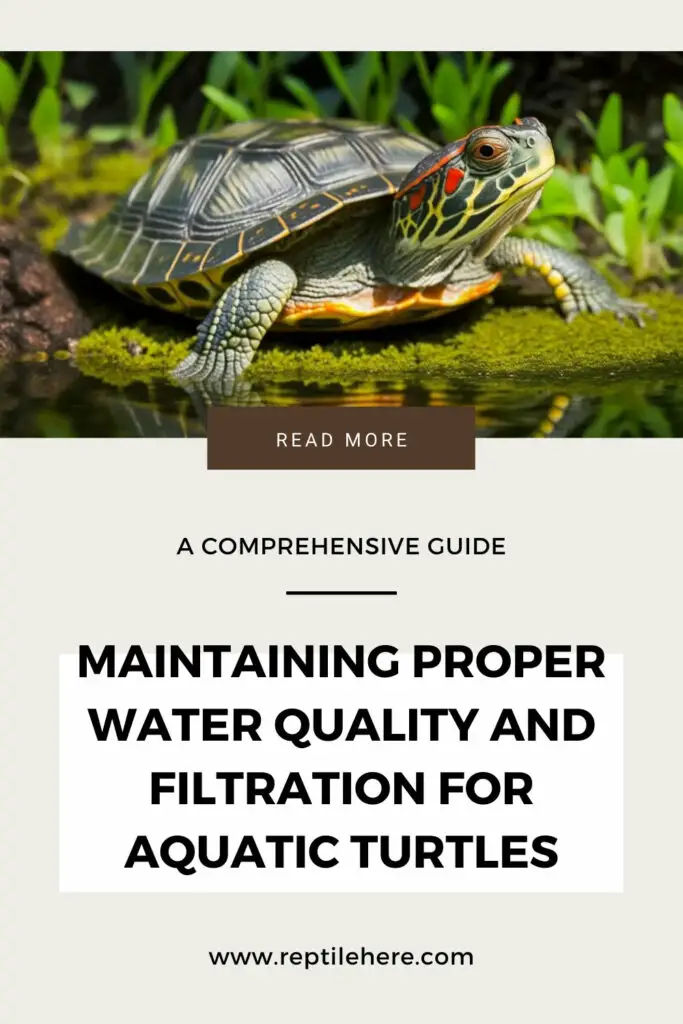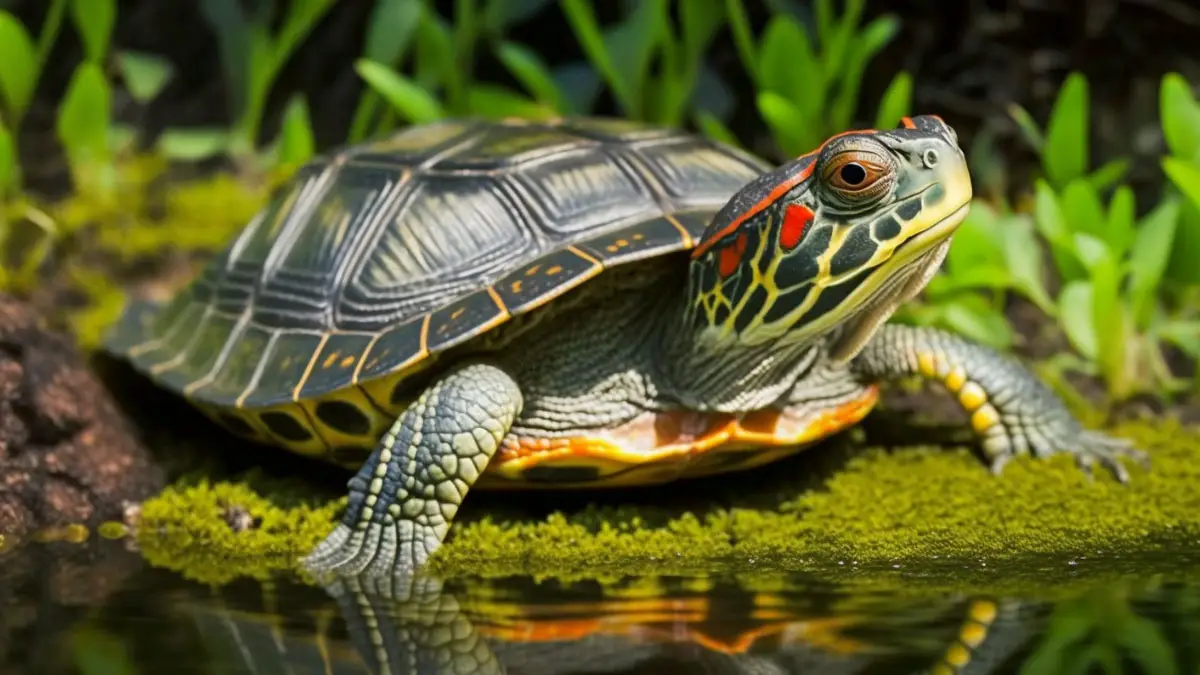A Comprehensive Guide to Maintaining Proper Water Quality and Filtration for Aquatic Turtles
If you’re having issues keeping your turtle tank clean, then you’ve come to the right place. A clean environment is crucial to keeping your aquatic turtle happy and healthy. Poor water quality can make the environment uncomfortable for your little friend and even encourage the growth of bad bacteria that cause diseases.
This article discusses how to maintain clean and healthy water in your turtle tank. We’ll discuss the various filtration system options available for your turtle tank and how to choose the right one for you. You’ll also learn the importance of testing your turtle tank water quality and the different water treatment options you can use to keep the water quality optimal.
How to maintain clean and healthy water for aquatic turtles
Contents
Below are the key tips to help keep your turtle tank water quality top-notch at all times:
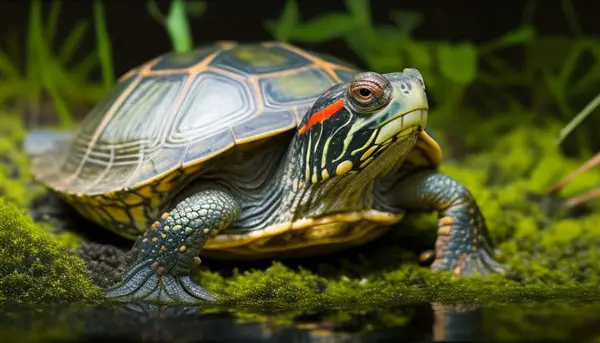
Use the right size of the enclosure
The water quality and overall tank cleanliness become easier to maintain once you get a bigger tank.
While waste is more concentrated in smaller tanks, the same waste and its byproducts get easily diluted in larger ensures.
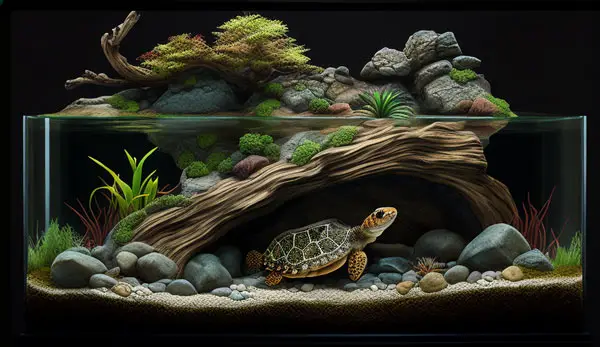
Partial water changes are more practical for keeping the water quality high in large tanks compared to small tanks.
As the rule of thumb goes, you should get a turtle tank that’s 10 gallons per every inch of your turtle shell length.
Avoid overcrowding your turtles
If you have more than one turtle, their combined waste can be quite a challenge to clean and maintain high water quality. This is especially true if you overcrowd the turtles in a small tank.
Ensure you provide your turtles with a spacious enclosure where all the turtles can move around freely and comfortably. Follow our rule of thumb above when choosing a tank for your turtles.
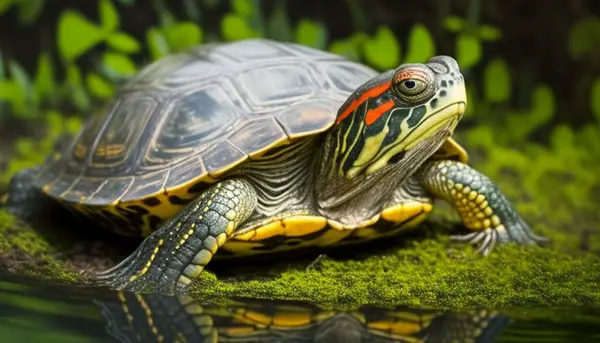
And for every additional turtle, you plan to add to the tank, make the tank ½x bigger. For instance, if you gave a 70-gallon tank and add an extra turtle, make the tank 35-inch bigger (i.e., 105 gallons big).
Get a powerful filtration system
Installing a powerful filtration system in your turtle tank is another way you can keep the water quality top-notch at all times.
We recommend getting a system that’s rated 2 to 3 times higher than the amount of water in your turtle tank for maximum efficiency. For instance, if you have a 20-gallon turtle tank, choose a 60-gallon rated filter system.
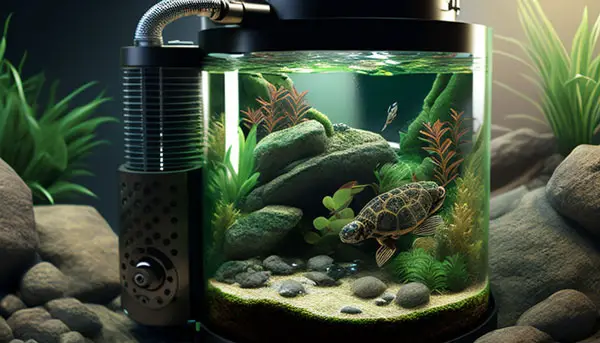
As for the type filter, there are several options to consider. Here are the most popular options:
- Canister filter: These filtration systems are a popular choice for many turtle owners due to their high efficiency and ability to handle large water volumes. This makes them an ideal choice for big turtle tanks housing multiple turtles. They also work quietly, are low maintenance, and are compact.
- Submersible filter: Also known as internal filters, these models go inside the tank and are suitable for small tanks housing just 1-2 turtles or hatchlings. Their low capacity and the fact that they go inside the tank means they can take up significant swimming space.
- Hang-on-back filter: these filters are also ideal for smaller turtle tanks that hold 1 or 2 turtles. They’re liked for their compact design and ease of installation. Unfortunately, they have low filtration capacities and require a tank to be filled with water for proper functioning. These filer systems are best suited for fish tanks.
Weighing the pros and cons of each type of filter will help you easily decide which one to get for your turtle tank.
Clean the filter regularly
A filter system plays a critical role in keeping the water clean, so keeping it clean adds to the overall tank’s cleanliness and high water quality.
You’ll need to clean your filter if you notice debris starting to build up in your turtle tank or when the filter flow slows to a trickle or gets reduced than before. However, the rule of thumb is to clean it after every 2 to 3 months for most types of filters.
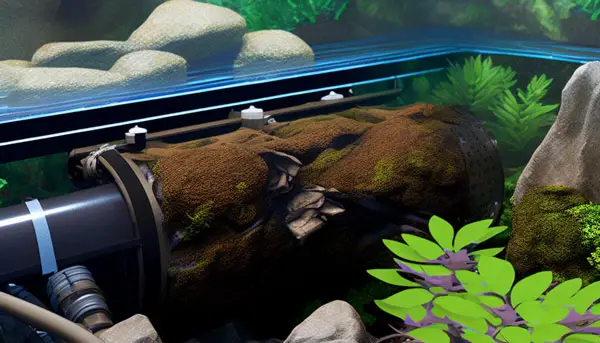
To properly clean your tank filter, just turn it off and then remove the media inside. Rinse this media using dechlorinated water (this type of water will help prevent killing the beneficial bacteria).
If the media is worn out, replace it with a new one. We also recommend changing the tank water at the same time you clean the filter.
Do regular water changes
You’ll also need to do regular partial water changes to your turtle tank to keep its quality high.
The frequency of partial water changes will depend on the size of your tank, turtle size, filter, and whether your turtle feeds inside the tank.
But generally, doing this water change once every week is recommended. In addition to partial changes, you should do a full water change once a month to help maintain the tank water quality.
You can use a siphon or gravel vacuum to help you easily remove the water from your turtle’s tank. Avoid mouth siphoning as it can lead to salmonella contamination risk.
Live aquatic plants can help
Adding live aquatic plants to your turtle tank can also help with maintaining the water quality. The plants will consume nitrates and other pollutants in the water that may lead to their quality decline. They’ll also compete for carbon dioxide with algae inside the tank.
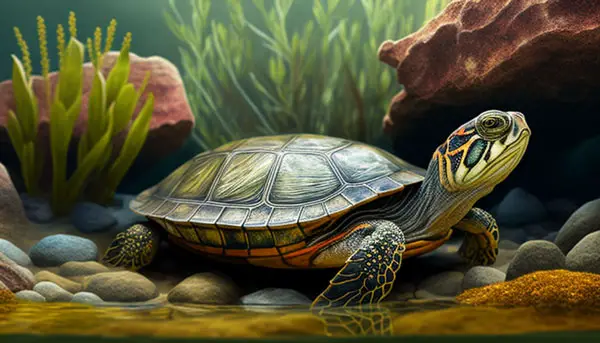
But be careful which plants you add to your turtle tank as not all of them are safe for turtles in case they consume them 9and they’ll surely do). Some safe plants to consider include water lily, duckweed, water fern, and water hyacinth.
Don’t forget to treat the water
Water treatment is another good practice for maintaining healthy water in your pet turtle aquarium. Essentially, you’ll need to use a de-chlorinator to help you remove all traces of chlorine in tap water before you use it in your turtle’s tank.
Additionally, you’ll need to use a water conditioner to help you adjust the pH (alkalinity or acidity) of water to make it suitable for your turtle to thrive.
Regularly monitor the water quality
You’ll also need to regularly monitor the quality of water inside your tank as part of maintaining its quality. Conduct the water test every 2 weeks or whenever you notice a change in the behavior of your turtle.
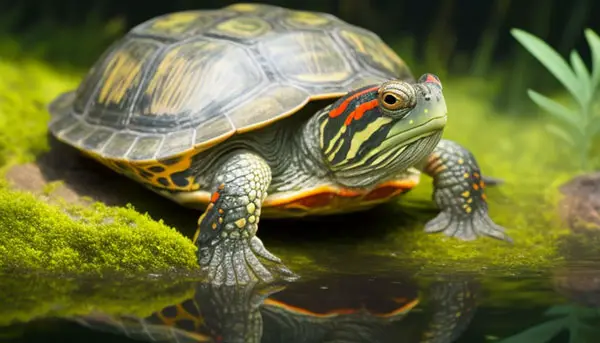
There are many water test kits available at pet stores to help you monitor water parameters such as pH as well as nitrogenous wastes in your turtle aquarium, including nitrites, nitrates, and ammonia. This is how the parameters should read for quality turtle tank water:
- pH: 6.8 to 7.8
- Nitrite: should be at a level zero
- Nitrate: less than 20 ppm
- Ammonia: should be at a level zero
- Chlorine: should be at level zero
As you can see, it’s important to do water tests every 2 weeks because if elements like chlorine, ammonia, and nitrite go above zero, they can make the environment toxic and uncomfortable for your pet turtle to live in.
If you find that these levels are too high, then you should do a full water change immediately. However, if their levels are low-to-moderate, just partial water changes will do.
Feed your turtle outside their enclosure
Another way to help keep your tank water clean and healthy is by feeding your turtle outside the enclosure, in a separate small container, e.g. a storage container or plastic tub.
Simply fill the enclosure with some of the water from the turtle’s enclosure to ensure it is within the optimal temperature range for the species. Just make sure you replace the water with clean, fresh water afterward.
This trick works against the messy nature of turtles. It helps eliminate leftovers that tend to decay as well as turtle waste that accumulates inside the tank and affects the water quality. However, this involves a lot of additional work, and may not work for everybody.
However, if you have already equipped your tank with strong filtration, and do regular water changes and monitoring, you can just continue feeding your turtle inside its enclosure.
You can scoop the excess food particles shortly after feeding to help keep the environment clean.
Keep the tank décor to a minimum
Turtle tank substrate and other decors such as fake plants, toys, etc., can help enhance the appearance of your turtle tank.
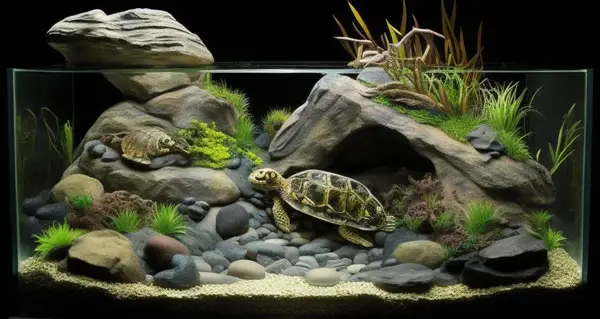
However, some of them such as gravel and large rock substrates can easily trap and accumulate uneaten food and waste.
This can quickly foul the water and affect its quality and making the environment unhealthy for your turtles.
Final Verdict
Dirty water in your turtle tank can make living conditions uncomfortable for your pet and even encourage bad bacteria growth that makes your pet ill. The best ways to maintain quality turtle tank water include using a strong filtration system, getting a larger tank, avoiding overcrowding, making regular water changes, and cleaning the filter regularly.
Treating the water and testing its quality regularly can also help keep the water quality top-notch. Other tips to help you keep the water quality in your turn tank optimal include feeding your turtles outside their enclosure, keeping the substrate to a minimum or completely avoiding it, and introducing live aquatic plants.
